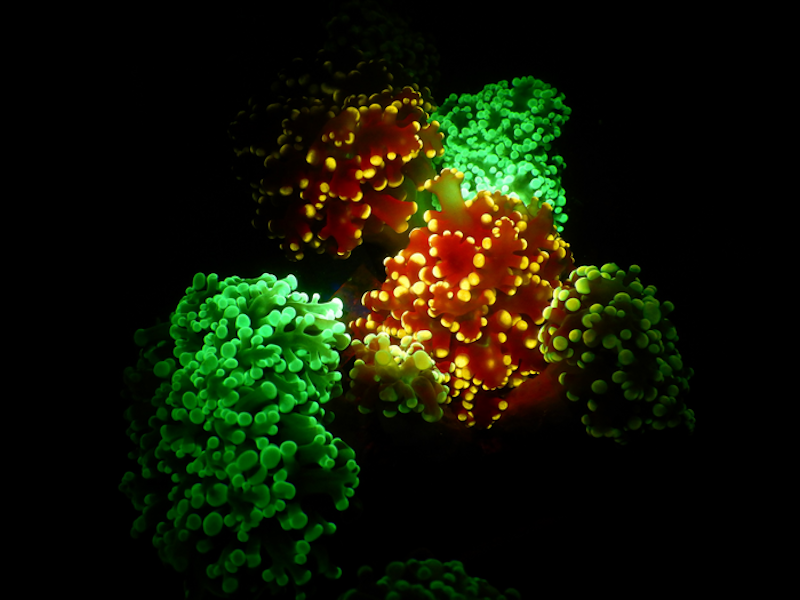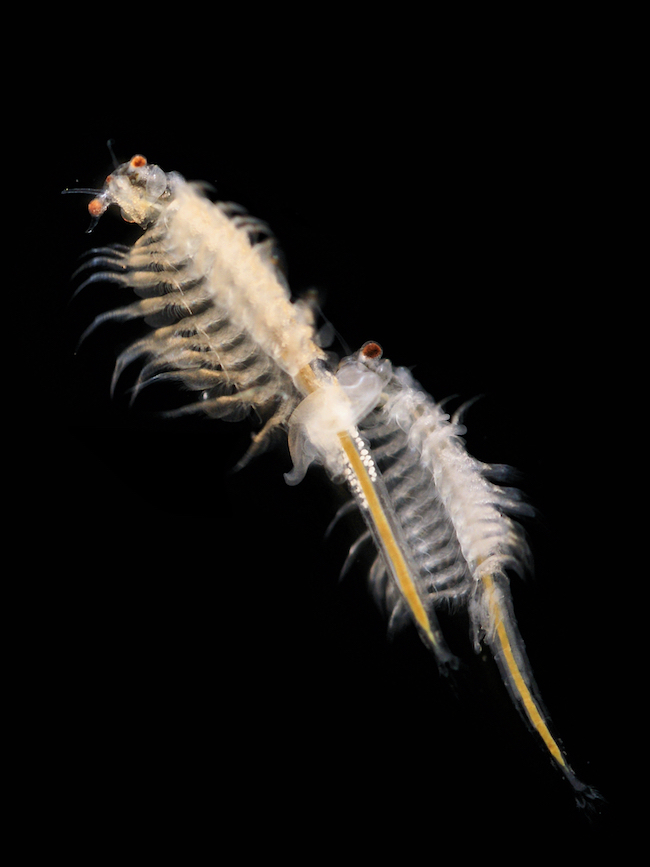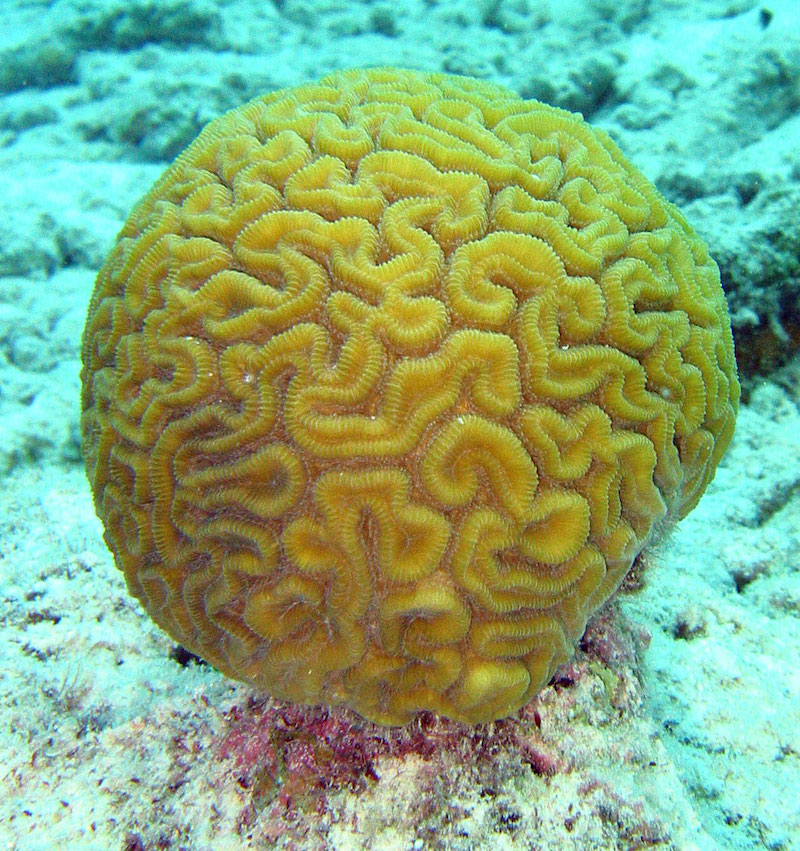
Corals are animals! And did you know they can be fluorescent, too? In other words, they can glow, even in deeper waters. Their bright colors are a beautiful natural display. On July 17, 2022, researchers at Tel Aviv University in Israel and Scripps Institution of Oceanography said they’ve solved the mystery of why corals glow. The answer is simple: to lure their prey.
Or Ben-Zvi at Scripps Institution of Oceanography and Tel Aviv University led the study. Yoav Lindemann and Gal Eyal assisted in the research and Yossi Loya supervised. The researchers published their peer-reviewed findings in Communications Biology (Nature) on June 2, 2022.
Yes, corals glow
Scientists have known for a long time that corals can glow. They are fluorescent creatures and can glow even at significant depths. Since sunlight is quite limited in deeper waters, corals can’t always rely on photosynthesis for energy. For example, mesophotic coral ecosystems, at a depth of 100-500 feet (30-150 meters), live in a low, blue-shifted light environment.
The actual reason the corals glow, however, has eluded scientists until now. Previous theories include to screen radiation or even facilitate photosynthesis (where there is enough sunlight in shallower water). Other ideas are antioxidant activity, to protect against herbivores or to attract symbiotic algae.

But why do corals glow?
The scientists at Tel Aviv University say they have the answer. Corals use fluorescence to attract prey, such as plankton. The researchers tested their hypothesis by trying to find out if plankton are attracted to fluorescence. The scientists conducted their testing in both the ocean and in the lab. As the paper stated:
The evidence provided here – that plankton are actively attracted to fluorescent signals – indicates the significant role of fluorescence in amplifying the nutritional sink adjacent to coral reefs.
Using crustaceans as bait
The researchers used mesophotic corals for their first experiments. These are corals that live in low light, between the shallow coral reef area and the deep, completely dark zone of the ocean. They exhibit a range of different fluorescent appearances.
As a food source for these experiments, the researchers used the aquatic crustacean Artemia salina, a brine shrimp. They are one type of food source for corals. The scientists provided the crustaceans with a choice between a fluorescent target (green or orange) and a clear, non-colored target. The colored targets attracted by far the most crustaceans.
Fish, however, tended to avoid the colored targets, the orange ones in particular.

Corals and plankton in their natural habitat
The second part of the testing involved actual plankton in the ocean. The results? About 130 feet (40 meters) deep in the sea, where the corals live, the fluorescent traps (both green and orange) attracted twice as many plankton as the clear, non-colored trap. Ben-Zvi said:
We conducted an experiment in the depths of the sea in order to examine the possible attraction of diverse and natural collections of plankton to fluorescence, under the natural currents and light conditions that exist in deep water. Since fluorescence is ‘activated’ principally by blue light (the light of the depths of the sea), at these depths the fluorescence is naturally illuminated, and the data that emerged from the experiment were unequivocal, similar to the laboratory experiment.
Finally, the researchers studied the predation rates of mesophotic corals that were collected at 145 feet (45 meters) in the Gulf of Eilat. They found that corals that displayed green fluorescence exhibited 25% higher predation rates than corals with yellow fluorescence. This suggests that green fluorescence, in particular, is useful for attracting prey.
Corals’ fluorescent mouths and tentacles
There is additional evidence that corals use fluorescence to attract prey. Namely, that their mouths and tentacles themselves are highlighted by the bright colors. The flouresence guides the prey right to them. As Loya explained:
Many corals display a fluorescent color pattern that highlights their mouths or tentacle tips, a fact that supports the idea that fluorescence, like bioluminescence (the production of light by a chemical reaction), acts as a mechanism to attract prey. The study proves that the glowing and colorful appearance of corals can act as a lure to attract swimming plankton to ground-dwelling predators, such as corals, and especially in habitats where corals require other energy sources in addition or as a substitute for photosynthesis (sugar production by symbiotic algae inside the coral tissue using light energy).

Other fluorescent organisms
This new evidence is the strongest yet for explaining why corals glow. The researchers say that those characteristics may not be limited to just corals. Ben-Zvi said:
Despite the gaps in the existing knowledge regarding the visual perception of fluorescence signals by plankton, the current study presents experimental evidence for the prey-luring role of fluorescence in corals. We suggest that this hypothesis, which we term the ‘light trap hypothesis,’ may also apply to other fluorescent organisms in the sea, and that this phenomenon may play a greater role in marine ecosystems than previously thought.
Corals have been in danger from warming ocean water near the equator due to climate change. But interestingly, some coral populations have been spreading to subtropical waters in more recent years. Hopefully that is a good sign that these fascinating creatures will be able to continue to flourish in the years ahead.
Bottom line: Why do corals glow? Researchers at Tel Aviv University in Israel and Scripps Institution of Oceanography say that they use fluorescent colors to attract prey such as plankton, solving a long-standing aquatic mystery.
Source: Coral fluorescence: a prey-lure in deep habitats
The post Why do corals glow? To lure their prey first appeared on EarthSky.
0 Commentaires